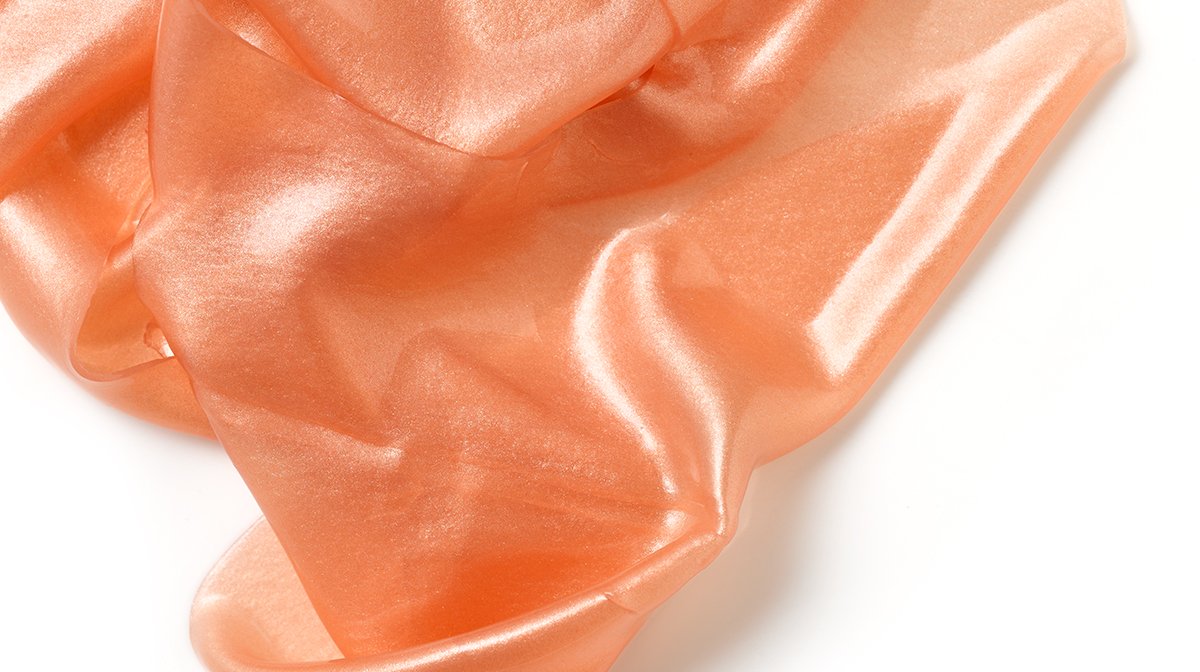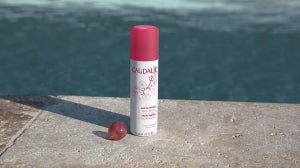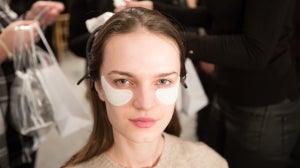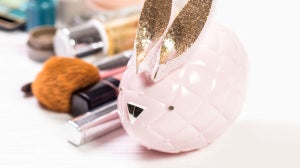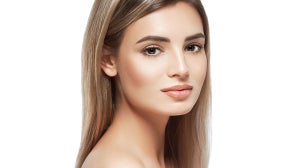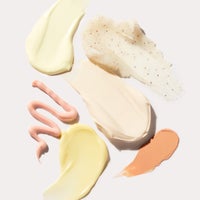
There’s nothing quite like the glow your skin radiates after a professional facial. Part of why the skin looks so bright, dewy and soft is because facials rely on a bevy of different masks to address multiple skin concerns. But that doesn’t mean applying different masks to specific areas of the face to push the skin in the right direction is reserved exclusively for aestheticians and spa facials. For skin that needs extra help, consider the trend of multi-masking, which can address everything from problematic pores to dull skin and even dryness with the right combination of masks to create a customized treatment.
Table of Contents:
- What Is Multi-Masking?
- Benefits Of Multi-Masking
- Skin Types and Concerns
- How To Multi-Mask
- Ingredient Spotlight
- Multi-Masking Tips and Trips
- The Best Masks for Multi-Masking
- Common Multi-Masking Mistakes to Avoid
- The Bottom Line
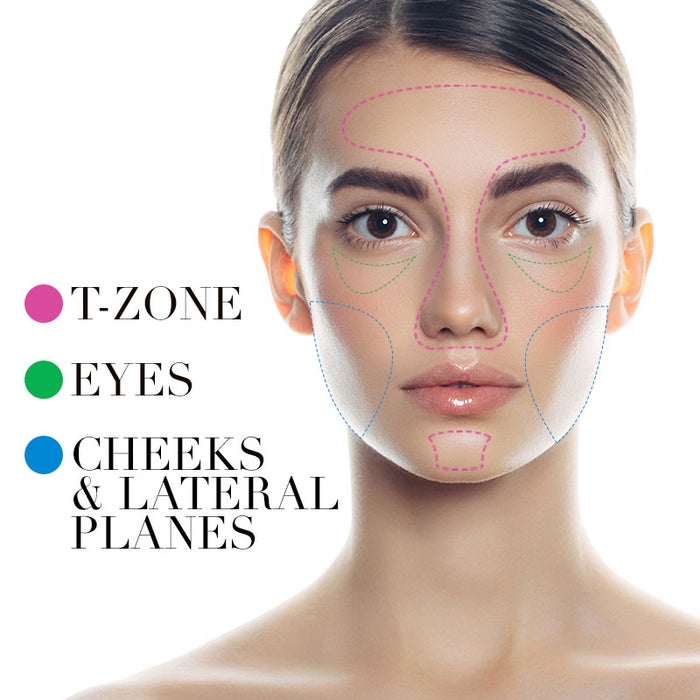
What is Multi-Masking?
Multi-masking involves applying different face masks to various areas of the skin to hone in on specific concerns for a custom approach to improving the health and appearance of the skin. Swiping on different colored and texture masks looks cool (hello, Instagram selfie!), but there's more to it. Mixing and matching different masks to address specific skin concerns improves them and treats certain areas with ingredients where needed most. For example, oily skin may be an issue on the chin and nose, so applying a mask that absorbs oil all over the face can dry the skin. The idea is to use multiple face masks in areas that address specific skin care concerns to reap the product's benefits.
Using a mask in a traditional sense only offers one benefit to the skin overall. However, layering different masks across the skin allows for a more targeted treatment and better results overall. The skin differs from one part of the face to another and treating it with only one type of mask may do more harm than good. That's because areas with more oil glands need less hydration and more oil-absorbing masks, whereas areas with thinner skin, like around the eyes, need more plumping and moisture. Bottom line: sticking to just one type of face mask isn't going to do your skin justice.
Benefits of Multi-Masking
Since multiple face masks are used in multi-masking, the technique offers numerous benefits to the skin. While any skin type can benefit from multi-masking—combination skin tends to see the most significant advantage. The key to making the most of it is to select face masks suitable for your skin type and address specific skin concerns.
Other reasons why multi-masking remains a skincare staple include:
- A brightening effect, giving the skin a lit-from-with and luminous look
- Improvement in pigmentation for a more even skin tone
- Less product is used since masks are not ‘wasted’ on areas where applying them is unnecessary
- Reaping the full benefit of the mask since it is used in areas where it matters most
- Reduction in overtreating the skin since only select areas are treated, so there's less worry about over-exfoliation or hydrating areas that may be prone to excess oil
Skin Types and Concerns
Some say that combination skin benefits the most from multi-masking since this skin type is either dry and oily skin, normal and dry skin, or oily and normal skin. All skin types can see the benefit of multi-masking as long as the masks are tailored to your specific skin needs. Different parts of the face have different needs, which is where multi-masking comes in.
To calm and shrink breakouts, a clarifying or detoxifying mask can be applied to blemishes like a spot treatment or used on oily areas like the nose, chin and forehead. Areas where dry skin is an issue can be treated with a hydrating mask to help restore depleted moisture levels and strengthen the skin's barrier. Plus, hydrating masks give a quick dose of hydration for an immediate effect. Areas of the skin that are red, inflamed or super sensitive respond well to nourishing and calming masks that feed the skin with antioxidants. You can apply a mix of oil-absorbing and hydrating masks for skin that's oily in some areas but dry in others (a.k.a. combination skin).
More specific skin concerns can also be addressed with multi-masking. For example, fine lines and wrinkles can be tackled with anti-aging masks packed with peptides, hydrators, and skin plumpers, while hyperpigmentation can be reduced with masks that contain exfoliating acids and brightening agents.
How to Multi-Mask
Multi-masking is easy and effective, but it requires plenty of time (you want to take your time applying and wearing the masks) and a few steps.
Before applying masks, you should cleanse the skin with a gentle cleanser (you can also exfoliate and steam the face, but they aren't mandatory). Multi-masking should only be done on freshly washed skin, preferably after showering since the pores are soft and open. Next, assess your skin and consider the two or three most pressing issues. Since multi-masking is entirely customizable, you can use masks to improve how it looks and feels on that particular day.
After choosing the proper masks, apply any purifying, oil-absorbing or detoxifying masks containing mud, charcoal or clay. These masks typically go on the nose, chin and forehead, where oil production is more problematic. If there are any active acne spots, these masks can also be applied to those areas. A thin, even layer is enough for the mask to work.
Next, layer on any hydrating, firming and brightening masks to target dull, dry and aging skin. Since these masks are usually more fluid and lighter, you'll want to apply them to the cheeks, neck and round the eyes.
From there, you can apply additional masks or put one mask on top of another. When layering masks, ensure the first mask is on the skin for five minutes before adding another mask to the mix, especially if it is a creamy mask. You can also apply eye patches or a lip mask.
Leave each mask on for 15 to 20 minutes or the recommended time on the directions. Then, rinse all the masks off with lukewarm water. Either towel off the water from your face or use a warm towel and drape it onto the face and let it sit for a minute before using it to wipe off the masks gently. Then, continue with your regular skincare routine.
Ingredient Spotlight
The ingredients used in face masks vary from synthetic chemicals to plant-based derivatives and everything in between. While there isn't one "best for masks" ingredient, instead, you'll want to look for a combination of ingredients so that your skin reaps the benefits.
Some of the more popular and commonly used skincare ingredients you’ll find in masks include:
- Antioxidants and niacinamide to help calm red, inflamed and sensitive skin
- Clay, sulfur, mud, and salicylic acid to shrink blemishes and control oil
- Hyaluronic and ceramides to moisture dry and mature skin
- Vitamin C and kojic or glycolic acid to lighten discoloration and hyperpigmentation
Multi-Masking Tips and Tricks
To make the most of multi-masking, you don't have to reserve it exclusively for prepping the skin right before a big event (although that helps!). You can practice multi-masking whenever your skin needs a little pick-me-up, after a long flight, a stressful day, when your skin is breaking out, or if you're seeing a change in your skin from the weather. To incorporate a successful multi-masking routine into your skincare routine, don't overdo it. Multi-masking once or twice a week should suffice.
The Best Masks for Multi-Masking
Stockpiling your beauty cabinet with various masks that benefit your skin is critical to multi-mask. Here are some of our favorites.
SkinCeuticals Hydrating B5 Mask
For dehydrated and stressed skin, this award-winning concentrated mask infuses the skin with hyaluronic acid and vitamin B5 to replenish lost moisture. The weekly treatment improves the skin’s natural moisturizing factor so that the skin can function optimally and appear healthier and more youthful.
Caudalie Vinopure Purifying Mask
Oily skin needs constant purification to prevent breakouts, and that’s just what this clarifying mask does. Apply the green clay mask, which also contains zinc and grape water, to mattify and soothe the skin.
Masktini Metal Head Gold Brightening Mask
A mix of serious skincare ingredients in this mask, such as vitamin C and pomegranate, help to rehydrate dull, dry skin that has lost its glow.
Natura Bissé Stabilizing Cleansing Mask
This mask-meets-cleanser works wonders at tightening and unclogging the pores to remove impurities from the skin. Oil-absorbing ingredients like kaolin clay and menthol help eliminate excess oil while salicylic acid exfoliates and gets rid of blackheads.
Peter Thomas Roth Cucumber Hydra-Gel Eye Masks
Tired eyes need help, and these gel patches reduce puffiness, dark circles, and fine line and wrinkles. The key ingredient in these single-use pads is cucumber extract to hydrate, nourish, and de-puff the skin.
Common Multi-Masking Mistakes to Avoid
Like any other type of skincare ritual, it's essential to take inventory of the right way to multi-mask. Multi-masking shouldn't be done daily since most masks are not designed for daily use. Instead, enjoy the benefits of a mask once or twice a week. Treating the skin with masks too often can lead to over-exfoliation or dryness.
If you're new to multi-masking, it's best to start slowly and ease into it. Use just two masks to get the feel of things, and then slowly add more masks with each session. This way, you can determine which masks work best for your skin. Plus, if you're using something new, you'll want to ensure there are no sensitivities or skin allergies.
Also, always read each mask's directions and correctly apply and remove the product. Don't leave the mask on for longer than the instructions.
The Bottom Line
Multi-masking is a fun way to address several skin concerns at once and hone in on what your skin needs. Unlike traditional masks, multi-masking makes for a more tailored approach to treating the skin. Incorporating multi-masking as a regular part of your skincare routine may be the missing piece of the puzzle that will make the difference between good and great skin.
Visit skinstore.com to shop our favorite masks.
Browse our full range of face masks at SkinStore.

Related Articles

